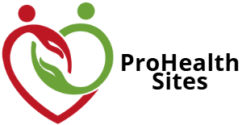
Emergency Medical Response Importance and Procedures
Introduction
Emergency medical response is very important for preserving lives when someone has a serious injury or a sudden health problem. Quick actions, medical evaluations, and prompt care are all part of emergency medical response. Emergency medical response teams are trained to look at crises give first aid, keep patients stable, and make sure they are safely moved to medical institutions Emergency medical response can mean the difference between getting better and having problems. The purpose of emergency medical response is to get help as soon as possible because every second matters.
The Importance of Emergency Medical Response
The importance of emergency medical response is that it provides quick care. When there are accidents or medical situations, emergency medical response lowers the number of deaths. When someone has a serious injury or heart attack, emergency medical response can stabilize their condition before they get to the hospital. Emergency medical response teams have the tools and knowledge they need to stop things from getting worse. Emergency medical response is also very important for managing disasters and keeping communities ready.
How to Respond to an Emergency Medical Situation
When there is an emergency, the first thing to do is assess the situation, call the right resources, and give basic care. Trained workers in emergency medical response follow rules for CPR, wound care, fracture support, and keeping vital signs stable. To respond to a medical emergency, you need to know the patient’s history, keep an eye on their respiration and pulse, and keep them from moving around. Emergency medical response makes sure the patient is ready to be moved without any more injury.
What trained professionals do in an emergency medical response
Paramedics, emergency doctors, nurses, and technicians are all professionals who work in emergency medical response. These people get certified training that focuses on ways to save lives. People who work in emergency medical response can make quick decisions while they are under a lot of stress. Emergency medical responders use their experience to deliver the right care before getting to the hospital. Trained professionals who respond to medical emergencies save more lives.
Getting the community ready for emergency medical response
When the community is ready, emergency medical response works better. Teaching people basic first aid speeds up emergency medical response in distant areas. Schools, companies, and public locations can hold seminars to get more people to respond. People can learn to recognize signs of a stroke or heart attack through emergency medical response awareness programs. Training in emergency medical response gives bystanders the power to take initial steps.
Technology and Emergency Medical Response
Changes in technology are changing how emergency medical services work. Faster reporting and GPS monitoring using mobile apps make it possible to send ambulances out faster. Automated external defibrillators in public places also help emergency medical response. Medical technologies used in emergency medical response make it easier to keep track of patients, talk to them, and give them the right care. Sharing data in real time helps emergency medical response teams while they are on the move.
Emergency Medical Response During Disasters
Emergency medical response is very important during earthquakes, floods, or big accidents. Emergency medical response teams plan ahead to handle many injuries at once. Triage is a part of emergency medical response that sorts patients based on how bad their injuries are. Setting up temporary medical units and working with rescue teams are also part of emergency medical response. A quick response to a medical emergency lowers the long-term effects on health.
Getting trained and certified to respond to medical emergencies
Emergency medical response training includes learning how to do CPR, handle trauma, get ready for disasters, and drive an ambulance. Courses get people ready for medical emergencies. Emergency medical response certification makes ensuring that personnel follow safety and performance rules. Hospitals help their support staff improve their emergency medical response skills. Regular hands-on practice sessions help people remember what they need to know to respond to medical emergencies.
Benefits of Quick Emergency Medical Response
Quick emergency medical care saves lives, speeds up recovery, and stops long-term damage. Emergency medical intervention also stops bleeding, handles shock, and stops infections. Patients who get immediate emergency medical care frequently do better. Emergency medical response is important because emergencies that aren’t treated right away might get worse quickly.
Problems with Emergency Medical Response
There are problems with emergency medical response, such as traffic jams, not enough resources, and not enough skilled staff. Because they are far away, rural regions typically have to wait longer for emergency medical help. In very bad weather, emergency medical response teams may have a hard time. Planning beforehand and getting the community involved can help emergency medical response work better.
What Will Happen to Emergency Medical Response in the Future
There will be AI-powered alarm systems, drones that deliver medical supplies, and greater training for emergency medical responders in the future. Data analysis will make emergency medical response systems work better. Digital tools will enable emergency medical response teams take better care of patients. Telemedicine will let doctors give real-time instructions to emergency medical responders.
Conclusion
Emergency medical response is a system that makes sure people get medical help quickly in an emergency. Emergency medical response helps keep patients stable, stops complications, and gives them skilled treatment. Emergency medical response depends on skilled teams, technology, and people in the community being aware of what to do. To make society safer, emergency medical response needs to be better, stronger, and easier to get to. Emergency medical response will keep getting better, which will save more lives and make sure that help gets to them quickly.

